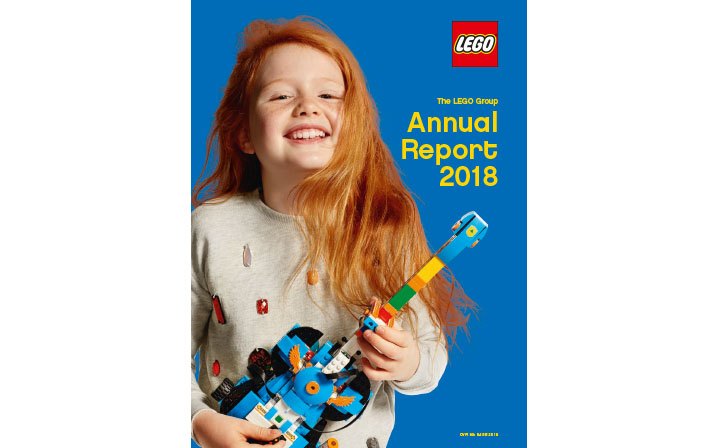Digital Lego: Can Lego Remain Relevant in the Digital Age
In recent months, a major question being asked of DFC Intelligence is the impact of Fortnite on the overall video game industry. Our overall take has been that Fortnite is not taking away business from most other companies in the industry. However, there are exceptions. Toy manufacturer Lego is an example of a company potentially being impacted by products like Fortnite. So it is worth asking if there is a future for a digital Lego?
A year ago, this March, Lego announced 2017 saw its first sales decline in 13 years. In late 2017, over 1,400 employees were laid off. Revenues were up in 2018, but still below the levels of 2016.
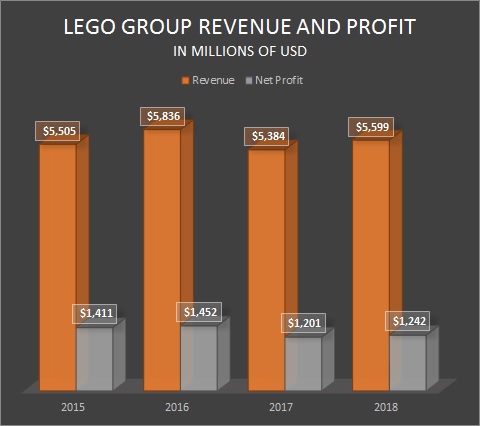
Of course, much of the blame was laid on the growing use of digital devices among children. The reality is slightly more complicated.
Lego is a Danish toy company that has enjoyed tremendous success in recent years. Any decline must be measured against stellar performance in an era when consumers increasingly flock to digital entertainment over physical products.
The first part of the 21st century saw enormous growth for Lego. There have been several books written about how Lego came back from the brink of bankruptcy in the late 1990s. This Business Insider article provides a great look at Lego’s comeback at the time of the 2014 launch of the Lego Movie.
The initial Lego Movie was a huge success. Five years later, the early 2019 launch of Lego Movie 2 was a major box office disappointment, despite strong reviews. In our view, this is a sign that Lego has simply not kept up with its audience as they have aged.
The challenge with being a toy company is that every few years you lose your audience as they grow out of your product. Lego was unique in that they have now grown a large adult audience. This demographic even has a name, Adult Fans of Lego (AFOL).
If you look at the Lego line you will notice a large number of sets in the $200 to $800 price range. By and large, these are targeted towards AFOLs. A problem Lego faces is it is becoming clear they are not keeping their audience as they become teenagers.
Surveying consumers under 13 is always problematic due to legal restrictions. DFC Intelligence has always kept an ongoing focus group of children in the 7 to 12-year old age bracket. Going back over 20 years we have kept up with some of our consumers as they now are approaching 30.
Twenty years ago, it is safe to say Lego had limited appeal to children. Back then, Nintendo with products like Pokémon were all the rage. In the early 2000s we could see a change as Lego licensed IP like Star Wars and Harry Potter.
By the 2014 launch of the first Lego Movie, Lego was all the rage among the 7 to 12-year old audience. The issue is that by the time the Lego Movie 2 came out five years later that 7 to 12-year old group is now 12 to 17-years old. We found that only a handful were still interested in Lego. Of course, Fortnite is huge with this demographic.
Among current the 7 to 12-year old demographic, there was surprisingly little interest in the Lego Movie 2. When you realize the Lego Movie 2 was a direct continuation of the first movie the apathy is not so surprising. The new Lego movie makes little sense to the young generation that did not see the first movie.
Remaining relevant to a maturing audience is tricky for any toy company. Lego now seems to be more aware of the issue, but efforts in the past few years have been limited. It is hard to erase a past failure in marketing to a generation and the question becomes what will Lego do to ensure success with future generations.
As far as digital products go, Lego has a long and mixed history. Over the past 15 years, the company has had tremendous success with Lego games developed and published by Warner Bros (via the Traveller’s Tales development subsidiary).
The problem with the Traveller’s Tales games is that they have pretty much repeated the formula over many years. These games still appeal to a younger audience. However, they have little appeal to a teenage demographic. Furthermore, there is some indication their appeal is wearing off even among the core audience.
This brings us back to Fortnite. Of course, Fortnite is not to blame for Lego’s problems. It is more a sign of the issue. Before Fortnite there was Minecraft, which had a great impact among the Lego demographic. Lego eventually got involved with Minecraft with an entire line of Lego sets.
The thing about products like Minecraft and Fortnite is they seem like perfect crossovers with the Lego brand as they both are about building Lego-like structures. Of course, these games are also big on combat. Lego, historically, has made a point about its focus on non-violence.
Unfortunately, times have changed and a 100% pacifist attitude probably no longer makes business sense. This article from the Atlantic discusses how Lego’s have become more violent over the years, in part to compete with video games. The Traveller’s Tales video games feature combat. So, it seems Lego could compete directly with Minecraft and Fortnite if it wanted to.
Over the years, Lego has had all kinds of forays into the video game market. This even included the MMO game Lego Universe which lasted for about a year in 2011. Unfortunately, outside of its partnership with Warner Bros/Traveller’s Tales, most products have been flops.
It seems Lego’s current efforts are mostly into augmented reality (AR) where you can interact with physical bricks in a digital environment. There is already an established history with AR via the toys-to-life category.
Lego Dimensions was an AR video game/brick building set that launched in late 2015 for an initial three-year run. However, after only two years Lego shut it down. A planned Dimensions Minecraft version was never launched.
The problem Lego Dimensions faced was inventory issues. With physical products, you need to plan in advance, or you will not have an adequate supply. With the case of Lego Dimensions, there were too many poor selling, high production cost units sitting on store shelves.
Before Lego Dimensions, there was Lego Fusion. This combined building a Lego set with digital play on a tablet. Our young users gave us a mouthful about what was wrong with this product. Reviews on Amazon seem to bear this out.
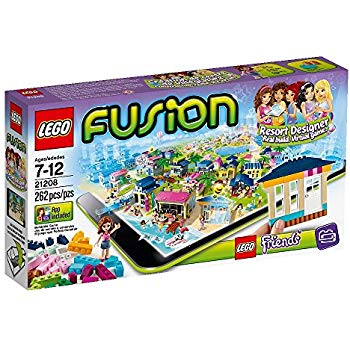
Going forward, Lego is sticking with it. Lego Hidden Side is an upcoming AR mobile-based product with a ghost theme. Lego is partnering with mobile developer Gameloft to develop mobile products based on Lego minifigures. In China, Lego is partnering with market leader Tencent on Lego Cube (China is seen as a major growth market for Lego).
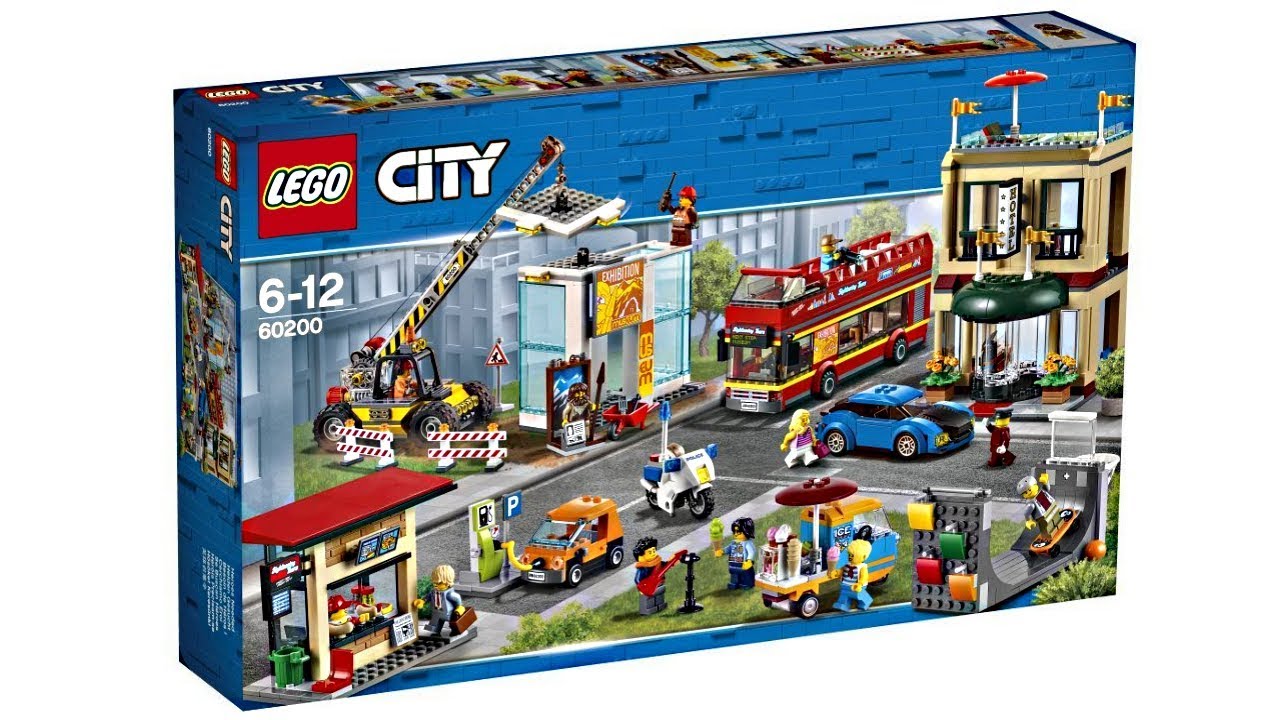
Lego’s strict age limits on many sets was of particular frustration to kids we talked to
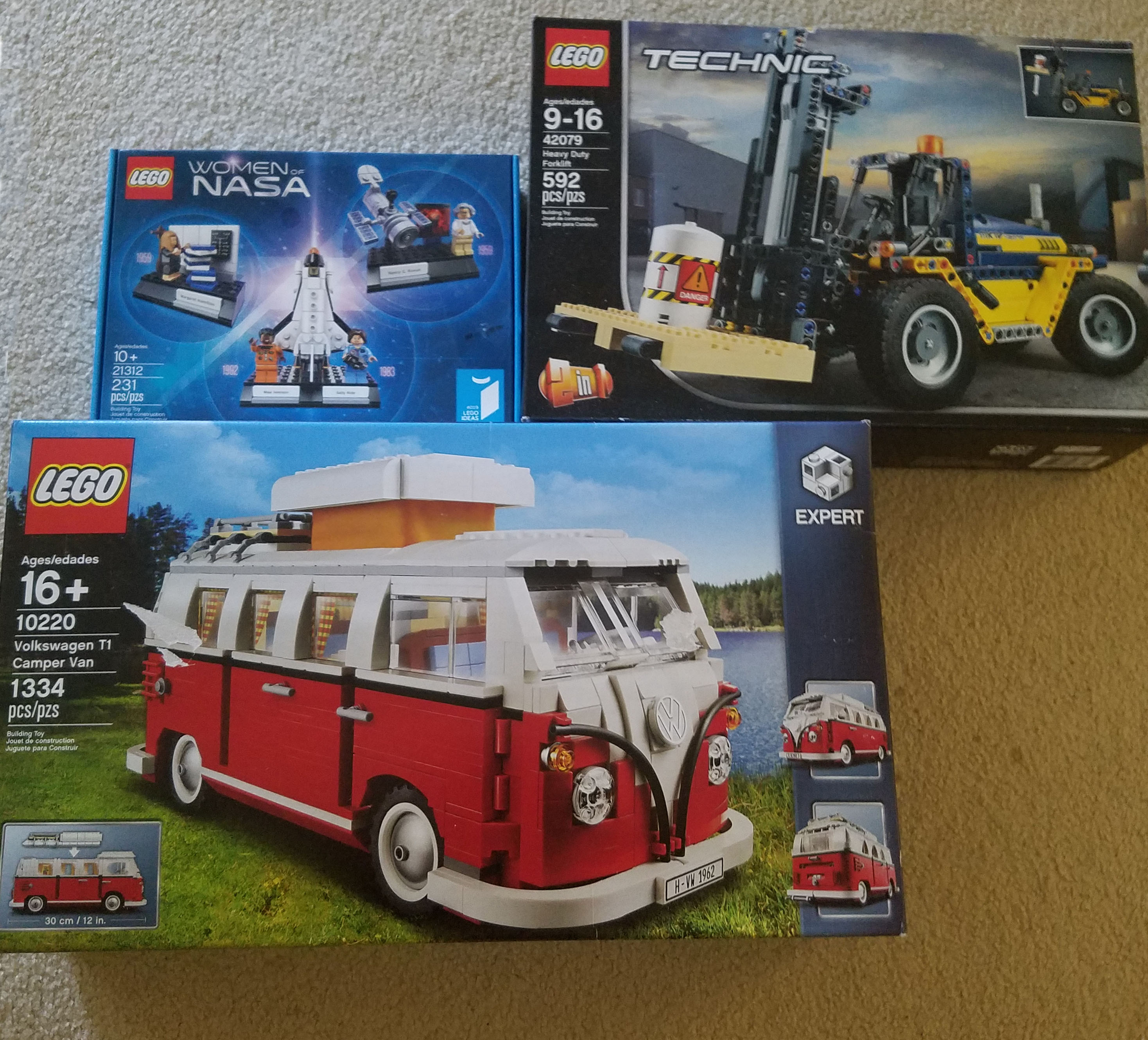
In short, Lego is continuing its strategy of throwing a lot of things against the wall to see what sticks. The issue is most of these products seem to be targeted at the 7 to 12-year-old demographic. It raises the question of why Lego is not doing more to keep the teen demographic around, at least in mindshare. This is especially true when there is a legitimate question about whether kids under 12 even have a major demand for AR-like products.
Teenagers may not play with Legos, but adults are an important part of Lego’s business and a major growth area. Keeping culturally relevant is crucial for a company like Lego. Right now, Lego is barely trying in the 13-17-year old demographic. Some sets specifically exclude this demographic by saying they are only suited for 12 and under or 16 and older. Lego ignores teens at their own peril.
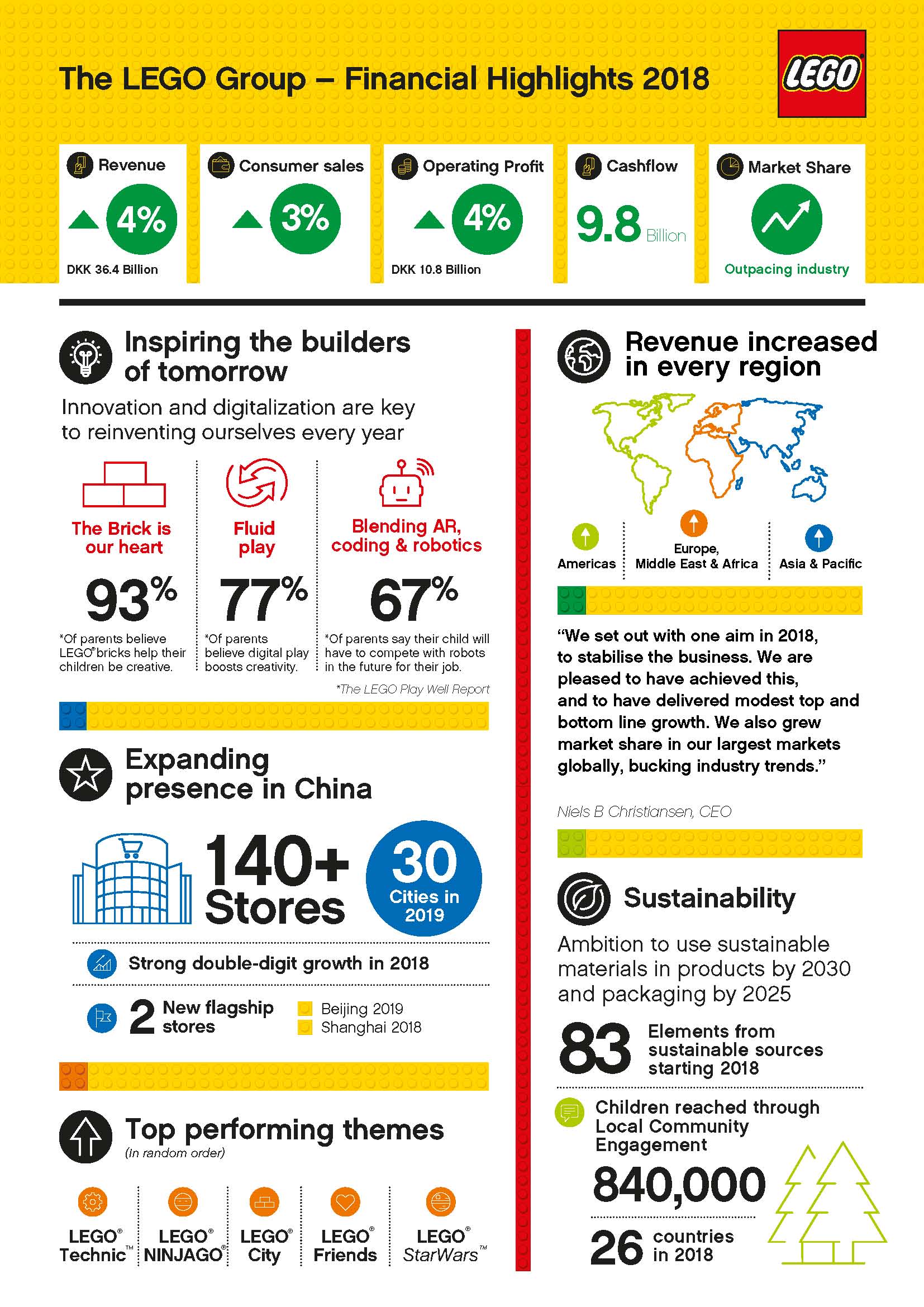
In February 2019, Lego released financial results for 2018. Consumer sales were up 3% versus 2017 (but still less than 2016). Much of this growth (9% versus 2% for Americas) came from Asia where Lego stresses China is a major growth market. However, Lego also released an infographic that once again focused on children. Mainly it quoted how parents think Lego’s are educational. That is commendable but probably not the best message for older kids.
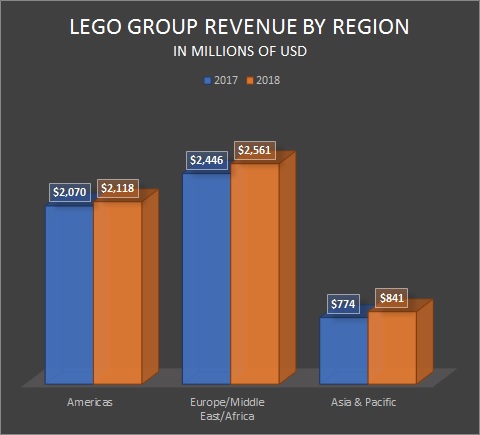
Long-term we think Lego will comeback. We compare Lego to Nintendo, a company that has been cyclical. Nintendo has been conservative and focused on quality and it has served the company well, even has it has limited growth. Adults often come back to Nintendo when they start having children. The same is likely to continue to occur with Lego.
We are the first to admit that headlines about the decline of Lego are somewhat misleading. Lego is a private toy company with strong sales and a healthy balance sheet. It has more room to take a limited growth strategy and stick to its core ideals. The actual decline has been fairly minimal and subtle.
Nevertheless, Lego does need a strategy if it wants to grow. This is true in all aspects, but especially when it comes to growth in digital areas. Partnering with major distributors to release half-baked digital products is clearly not working.

